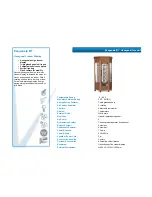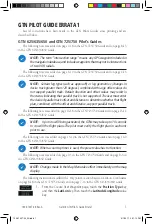
EFD1000 E5 Dual Electronic Flight Instrument (EFI) Install Manual
DOCUMENT # 900-00041-001
PAGE 66-226
REVISION D
© Copyright 2019 Aspen Avionics Inc.
NOTE: Changes to the magnetic field around the RSM can affect the RSM calibration and require
revalidation of the RSM performance.
Known sources of interference include (but are not limited to) the following types of
material located near the RSM (normally, these materials within 12 inches can cause
interference):
Steel-wound aircraft air-ducting
Steel hose clamps
Steel control cables and turnbuckles
Steel tube – especially at the welds
Magnetized or magnetic hardware
Servos
Trim motors
Poor bonding of electrical connections
Blower motors
Cockpit or cabin speakers
Known sources of interference due to electrical noise include (but are not limited to) the
following. Be sure to check for interference with the following systems operating:
Servos
Alternator/Generator and cabling to aircraft battery
Blower motors
Strobes, beacons
Pulse equipment (DME, transponder active TAS, TCAS)
Air conditioner
Electrical ground current through the aircraft skin
The following Table shows minimum separation distances from common sources of interference that
have resulted in an acceptable magnetic environment. These are guidelines and will not result in
satisfactory performance in every situation. Magnetic influence is somewhat additive, so multiple
sources of interference may require greater separation distances than shown here.
Magnitude
Total Gauss Field (TG)
(1)
Aircraft Equipment or Structure
Suggested Separation to RSM
+/- 20 higher than
Magnitude (TG)
(base
)
Ferrous fasteners (non-magnetized)
6 inches
+/- 20 to +/-30 higher
than Magnitude (TG)
(base
)
Larger ferrous parts
Unknown – suggest 12 inches
700 - 1000 (too high)
or
300 - 400 (too low))
Batteries, Steel Tube,
non-magnetized structure/equipment
12 inches







































